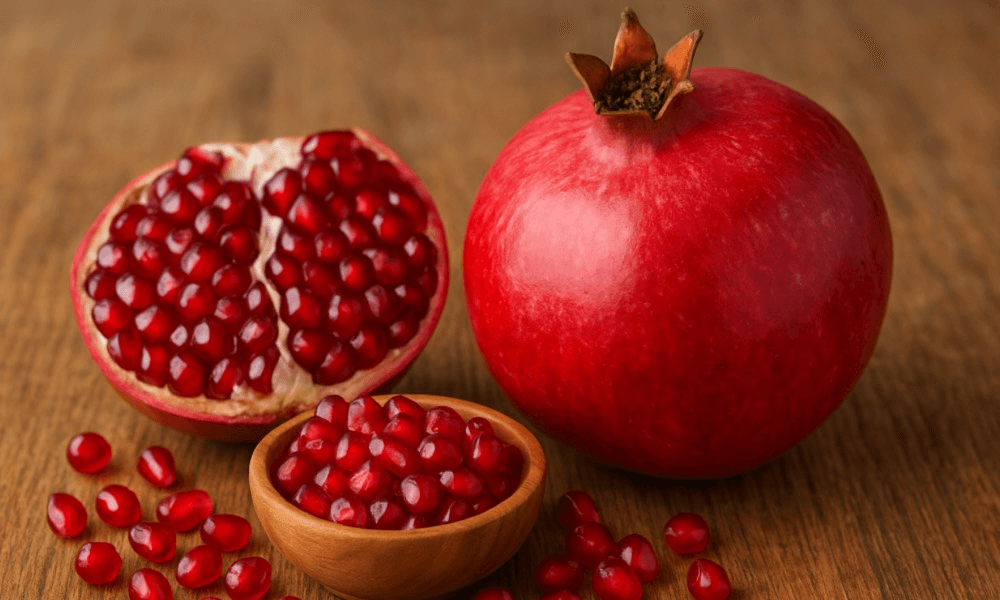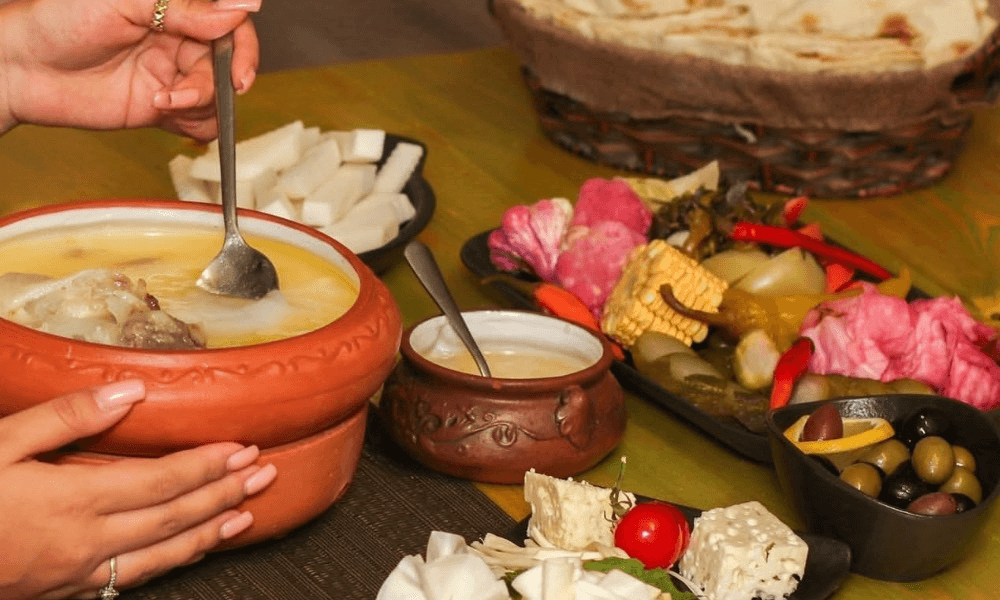
The Power of the Pomegranate — Armenia’s National Fruit
For centuries, the pomegranate has been one of the national symbols of the Armenian people, representing abundance, unity, and vital energy. Even today, this remarkable fruit remains deeply rooted in the rich traditions gathered under the name of Armenian cuisine. The pomegranate is not only a beautiful and symbolic food but also a flavorfully complex ingredient that adds depth to dishes—whether it’s an everyday meal, a festive table, or fine dining. Modern Armenian chefs have reimagined the role of the pomegranate so skillfully that it has become an ingredient capable of serving as a flavor accent, a source of freshness, and even the central delicacy of a dish. In this way, today the pomegranate on the Armenian table is not just a fruit but an idea—one that inspires creativity, flavor combinations, and a rediscovery of the true essence of Armenian dishes.
The pomegranate has a much broader use than simply making a salad delicious. It can be included in almost any dish, as its light tartness and simultaneously sweet, juicy character beautifully balance other flavors. This is why pomegranate-based Armenian recipes have in recent years become not only a preservation of tradition but also a modern culinary trend. Pomegranate can be added to meat dishes to give them a special shine, paired with grape leaves or light vegetable dishes, or used as a reinterpretation of traditional Armenian sauces, where the fruit’s richness and juiciness highlight the dish’s Armenian identity.
The pomegranate remains a true force in Armenian cuisine—a product that is symbolic, beautiful, and gastronomically unparalleled all at once.
Pomegranate on Armenian Tables
The pomegranate has always been an ornament of the Armenian table—whether for festive occasions or everyday meals. For generations, Armenian families have welcomed autumn by keeping pomegranates at home as a symbol of prosperity, health, and peace. Even during a simple dinner, the act of opening a pomegranate became a small ritual that brought the family together. This is why the pomegranate has become not just a fruit but also a symbol of Armenian hospitality, and even today in restaurants— including at Gata Pandok—pomegranate is often one of the first items to decorate the table, adding a touch of Armenian warmth.
Historically, the pomegranate has also been an important part of Armenian ceremonial tables. It was placed on wedding tables as a symbol of fertility for the new family. On New Year’s tables, it was one of the fruits believed to bring good fortune. And to this day—even if the practical significance of traditions has changed—the sentiment remains. Even someone who no longer follows old customs still feels a sense of Armenian festivity when they see a pomegranate.
All of this makes the pomegranate more than just a flavor or a culinary tool—it becomes an ingredient that represents Armenian identity. So when pomegranate appears in a salad, next to meat, or even as glittering seeds scattered over warm tandoor bread, it adds not only layers of taste but also a story—about Armenianness, belonging, family warmth, and national memory. This is why Armenian cuisine today is unimaginable without the pomegranate, whether in traditional or modern dishes.
Pomegranate — The Modern Creative Spirit of Armenian Cuisine
In recent years, modern Armenian cuisine has shown that tradition never hinders innovation. On the contrary, it provides a strong foundation upon which new flavor worlds can be created. The pomegranate has become one of the central figures of this innovation because it embodies the most important qualities of Armenian cuisine—color, freshness, and abundance. Thanks to the pomegranate, many dishes gain a depth that gives Armenian cooking its unmistakable character.
Many young chefs have begun using pomegranate in the most unexpected combinations, creating a new generation of dishes that have already become visible both in restaurant culture and on home tables. Today, pomegranate appears not only in traditional recipes but also in innovative preparations—in marinades, paired with purées, combined with warm vegetables, and included in plant-based or vegan dishes, where it naturally replaces sweet-sour flavor notes. This new approach demonstrates that the pomegranate is not merely a traditional ingredient but a central player in contemporary culinary thinking.
This transformation is especially noticeable in salads, where pomegranate has become an almost indispensable part of flavor balance. If once it was simply sprinkled on top, today many pomegranate salads are built around the logic of the fruit itself—combining greens, citrusy bitterness, nuts, and the bright burst of pomegranate freshness. The result is dishes that are not only healthy and light but also visually enticing and memorable.
But the presence of pomegranate is not limited to salads. It has also become a main component in lighter sauces and marinades that go beyond traditional flavor boundaries while still preserving the essence of Armenian identity.
The pomegranate has become an ingredient that unites the past and future of Armenian cuisine. It conveys the richness of tradition while enabling the creation of modern dishes that will be remembered in the years to come. The pomegranate stands at the heart of the kitchen—an eternal companion of Armenian flavors.






